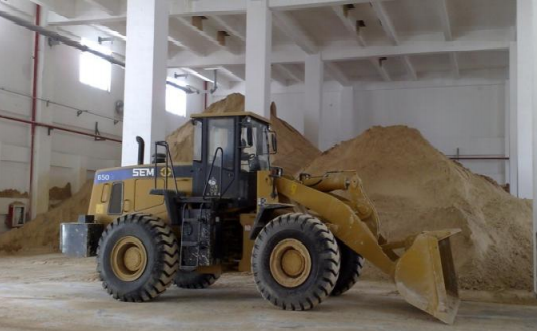- High End Gypsum Board System Solution Provider
Gypsum board raw material bottoming decryption, environmental protection production capacity attracting CCTV's attention
Gypsum board, as a widely used building material for interior decoration, has not received much attention despite its huge market demand. In recent years, due to the country's further attention to environmental production capacity and the policy influence of promoting environmental protection and supporting new environmental protection projects, gypsum board has entered the public's field of vision again due to its unique raw material. Jason gypsum board, as a typical manufacturing enterprise that has never compromised on costs and insists on using environmentally friendly raw materials, has received support from the national environmental protection new policy.

The raw material for gypsum board is undoubtedly gypsum (CaSO4), and although China has the world's largest reserves of natural gypsum, there are not many high-quality natural gypsum reserves that can be used as building materials. In recent decades, the rapid development of China's infrastructure industry has led to the large-scale exploitation of high-quality natural gypsum, which has almost exhausted resources. Therefore, manufacturing enterprises with gypsum products as their core are seeking natural gypsum as an alternative raw material that can supply a large amount of production capacity.

At present, there are three main sources of gypsum raw materials available for gypsum board production: natural gypsum, desulfurization gypsum, and phosphogypsum. As mentioned earlier, the available reserves of high-grade gypsum raw materials in natural gypsum are no longer sufficient to supply production capacity and the mining cost is relatively high. Therefore, the latter two raw materials have become the main industrial raw materials for producing gypsum building materials. Here, the editor will first explain the differences between the two raw materials. Firstly, these two raw materials are both by-products of modern industry. Desulfurized gypsum is produced by the desulfurization process of burning coal in thermal power plants for air treatment, while phosphogypsum is produced by the wet process phosphoric acid process of producing agricultural phosphorus fertilizer.

As by-products, there are two main differences between desulfurization gypsum and phosphogypsum. One reason is that phosphogypsum contains a large amount of toxic and harmful impurities such as phosphorus, fluorine, acid insoluble substances, and a small amount of radioactive substances due to process reasons, while desulfurization gypsum is a high-grade pure dihydrate gypsum (CaSO4 · 2H2O) that is non-toxic and harmless; The second factor is the price, as desulfurization gypsum has a much higher raw material price than phosphogypsum.

As a foreign-owned enterprise, Jason Gypsum Board is based on the concept of environmental protection and public welfare. From the beginning of its establishment and operation, all production lines use 100% desulfurization gypsum as the raw material. Gypsum based products, whether gypsum board or gypsum powder, are building materials used for interior decoration in buildings and inevitably require long-term contact with the human body. Therefore, even if the harmful substance content of phosphogypsum meets national standards after certain treatment, it is still far inferior to desulfurization gypsum from a safety perspective.

At present, the countries with the highest proportion of desulfurization gypsum application in the world are mainly Japan, Germany, France and other developed countries that focus on environmental protection and safety. Relatively speaking, the excellent performance parameters and low harmful impurities and non radioactive characteristics of desulfurization gypsum have also been fully recognized by the market and loved by end users. The only disadvantage is that desulfurization gypsum has higher production costs than phosphogypsum due to its higher raw material prices, and the high price of finished products results in insufficient market competitiveness. At the government level, it has seen this reality and has introduced relevant tax support policies in recent years, providing corresponding tax reductions for gypsum production enterprises that fully use desulfurization gypsum raw materials, reducing production costs for related enterprises, enhancing product market competitiveness, and promoting environmental protection through policies. CCTV News has also conducted a special report on this.

Jason Gypsum Board will continue to practice the development concept of environmental protection and public welfare, follow the policy guidance of national sustainable development, and always put the health and safety of users first. In the process of further developing and producing various green new building materials, we will also adhere to the use of environmentally friendly raw materials and processes, allowing industrial production and green mountains and waters to coexist in an orderly manner.
(Some of the images are from the internet. If there is a possibility of infringement, please contact the editor to delete them.)
